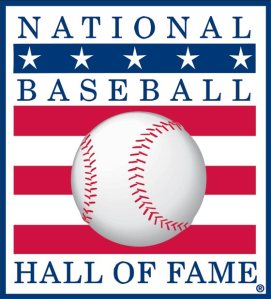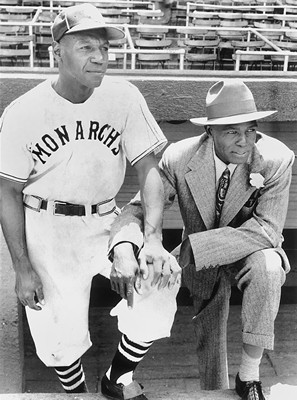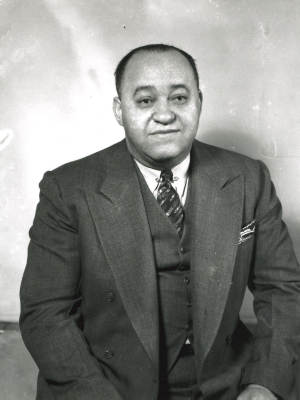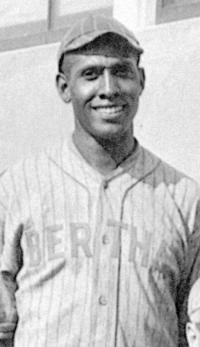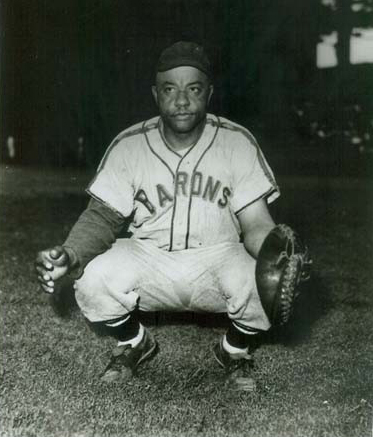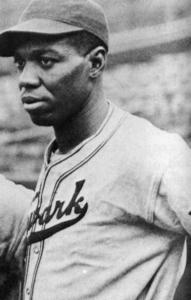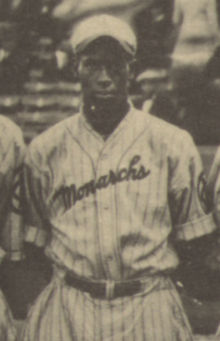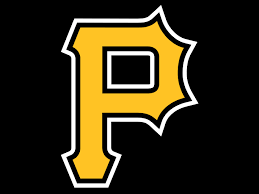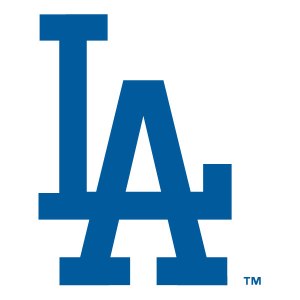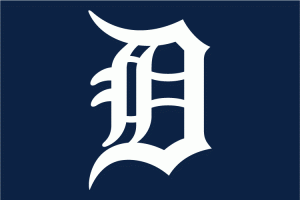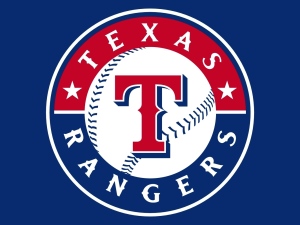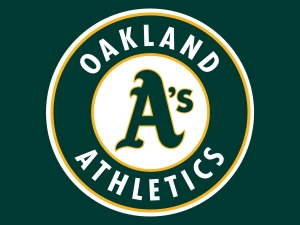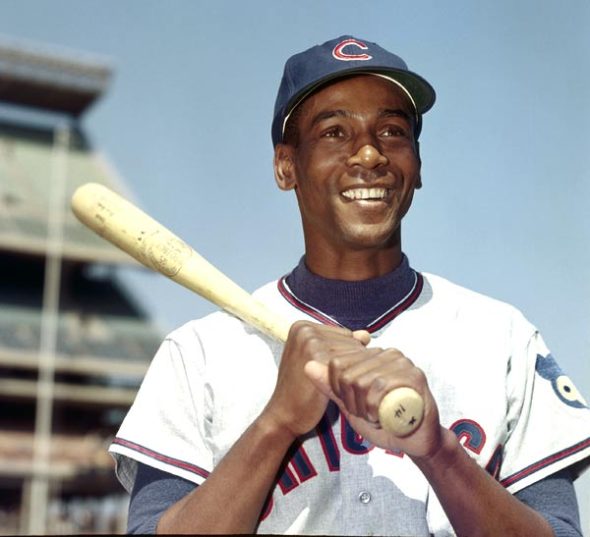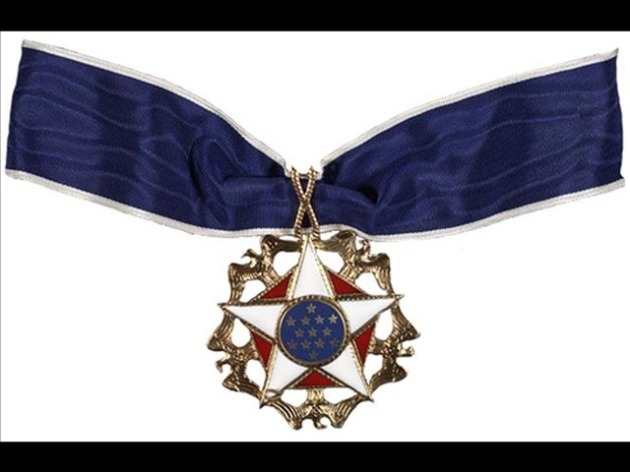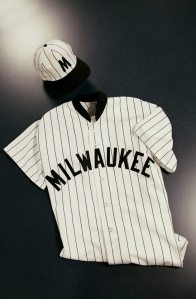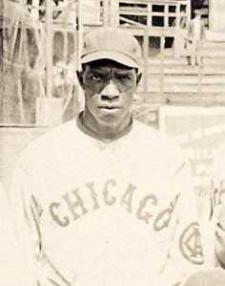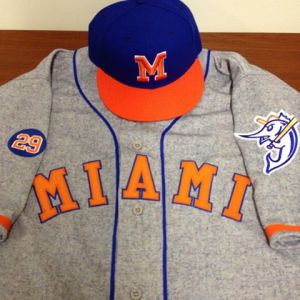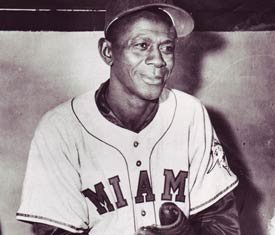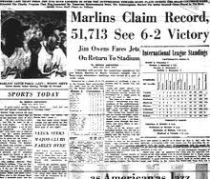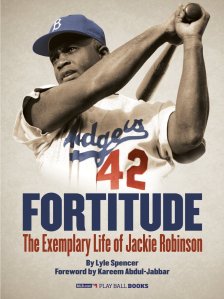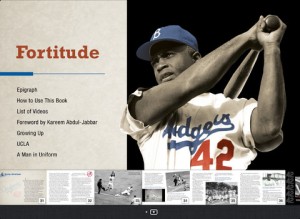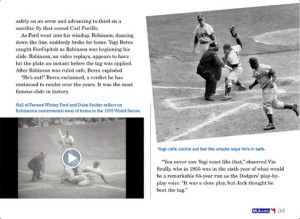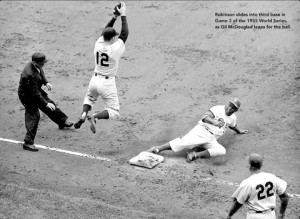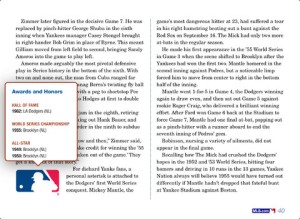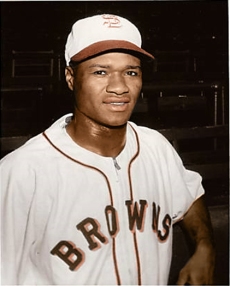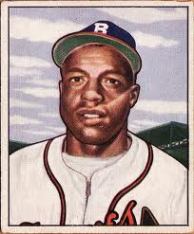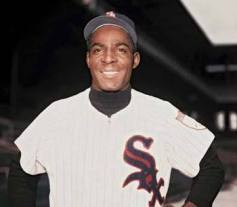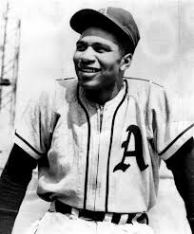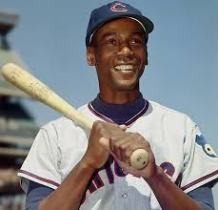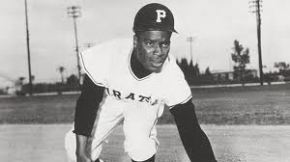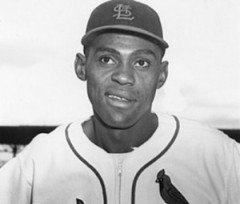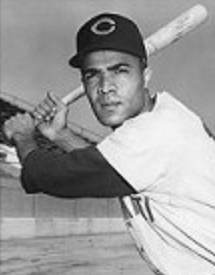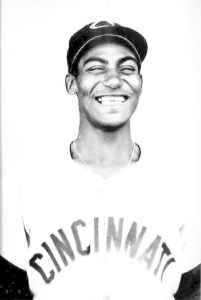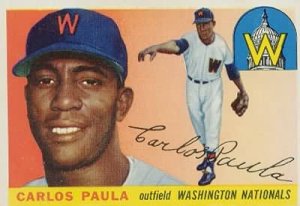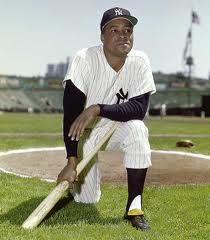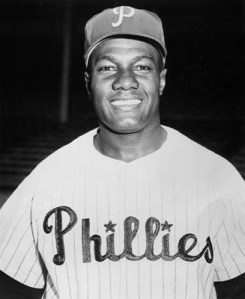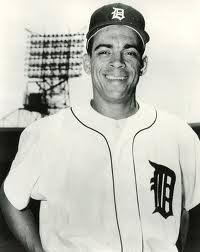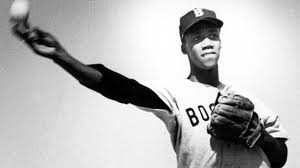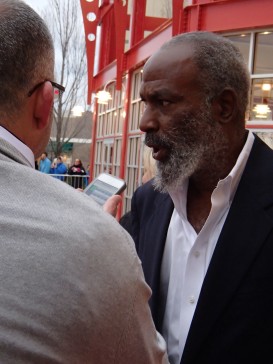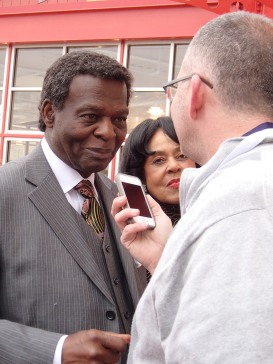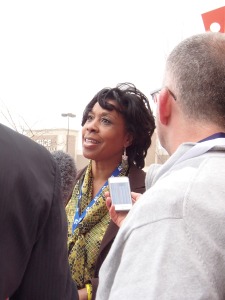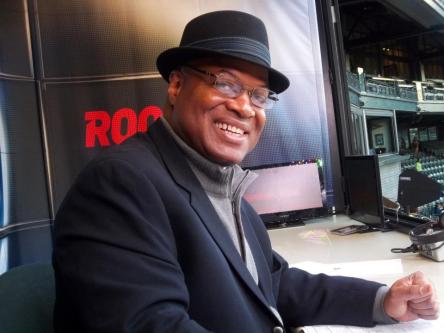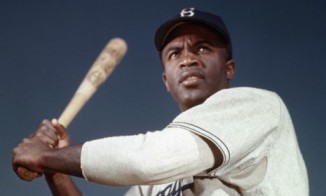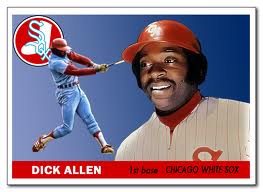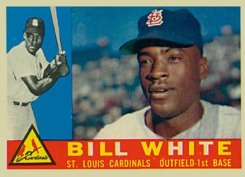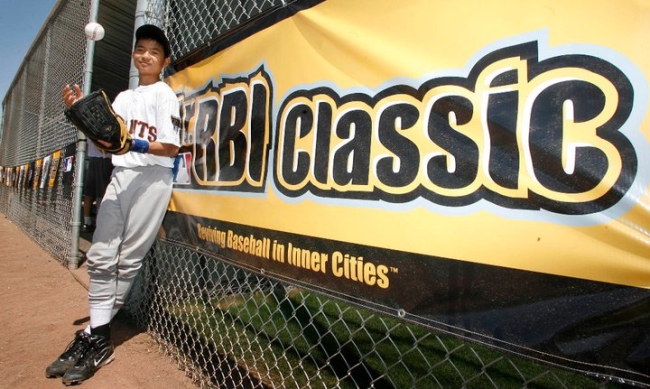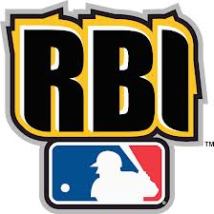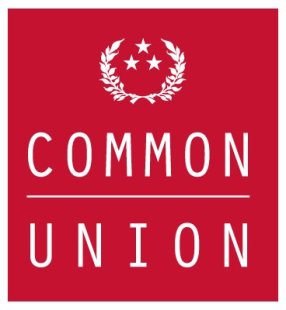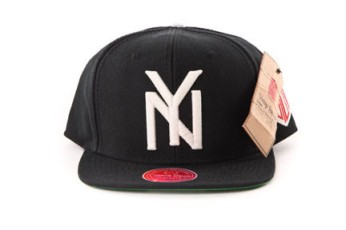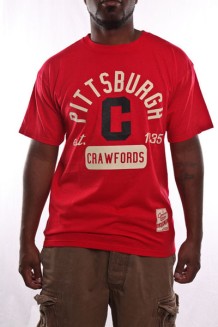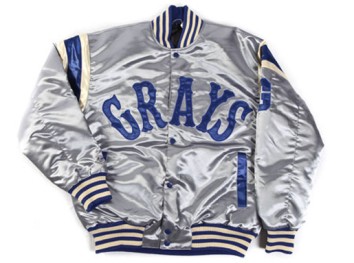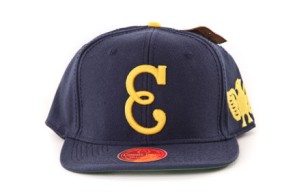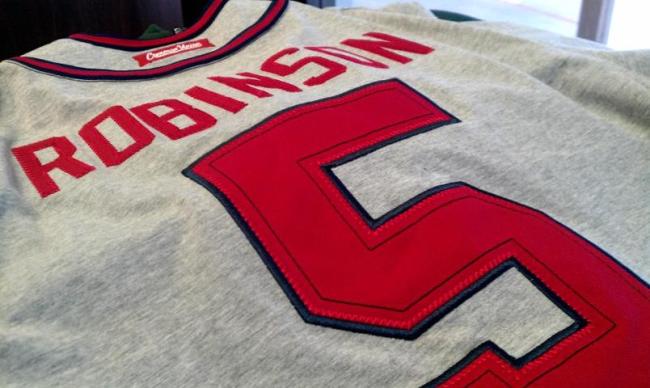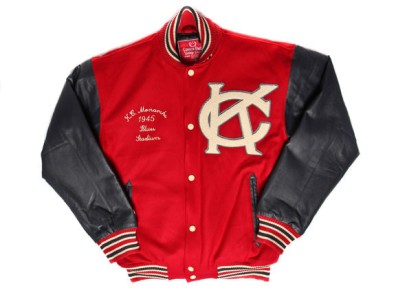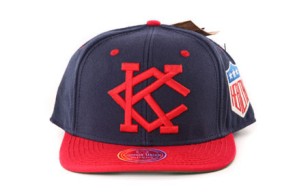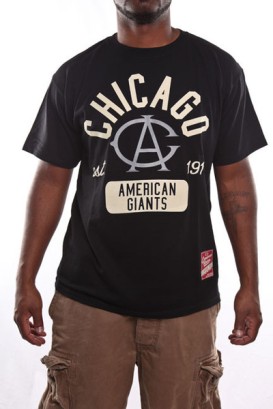Category: Today’s Influence
Still Waiting On The Call
Cooperstown came calling this week for Randy Johnson, Pedro Martinez, John Smoltz and Craig Biggio.
Unfortunately we may never see another Negro Leagues player get tabbed with the honor of being selected into Baseball’s Hall of Fame.
“I think we’ve seen the last,” Negro Leagues President Bob Kendrick said. “The Veterans Committee had a chance to do the right thing and bring Minnie Minoso in a couple of weeks ago but did not.”
Baseball’s greatest honor has eluded great players through the decades whether it has been Major League Baseball or the Negro Leagues – an argument can be made for many through the ages.
There were 18 players from the Negro Leagues inducted into Cooperstown:
Satchel Paige
Josh Gibson
Buck Leonard
Monte Irvin
Cool Papa Bell
Judy Johnson
Oscar Charleston
John Henry Lloyd
Martin Dihigo
Rube Foster
Ray Dandridge
Leon Day
Willie Foster
Willie Wells
Bullet Rogan
Smokey Joe Williams
Turkey Stearnes
Hilton Smith
Until 2006, when a special committee on African-American baseball voted on a ballot that contained the names of 39 great players, managers and executives. Of those, 17 more were elected including:
Ray Brown
Willard Brown
Andy Cooper
Frank Grant
Pete Hill
Biz Mackey
Effa Manley
Jose Mendez
Alex Pompez
Cum Posey
Louis Santop
Mules Suttles
Ben Taylor
Cristobal Torriente
Sol White
J.L. Wilkinson
Jud Wilson
So, with the help of Kendrick and a piece of paper that Buck O’Neil used to carry around in his pocket of great Negro Leagues players who belong in Cooperstown – here are some players/ contributors who should be in the Hall of Fame.
Buck O’Neil
We all believe that Buck should be in and in 2006 thought it was a done deal. Unfortunately it was not. While his career numbers may not knock you out of your chair there is no doubt that baseball has never had a better ambassador than O’Neil. Many of the names above were elected in part because of the campaigning of O’Neil. The main force behind the creation of the Negro leagues Baseball Museum however came up short.
“God’s been good to me. They didn’t think Buck was good enough to be in the Hall of Fame. That’s the way they thought about it and that’s the way it is, so we’re going to live with that. Now, if I’m a Hall of Famer for you, that’s all right with me. Just keep loving old Buck. Don’t weep for Buck. No, man, be happy, be thankful.”
Gus Greenlee
Gus Greenlee was an innovator who did not stand for the baseball “status quo”.
In 1933 Greenlee founded the annual East-West Classic, an all-star baseball game in Chicago between Negro League stars. That same year he was the primary founder of the second Negro National League, which he served as president for five seasons.
For a while the Crawfords were the best-financed team in black baseball. Revenue generated from his gambling and bootlegging operations allowed Greenlee to sign black baseball’s biggest names. The 1935 squad may be the best ever to play in the Negro Leagues, as it fielded five Hall of Fame players. Money also enabled Greenlee to build his own ballpark. When he bought the Pittsburgh Crawfords in 1930. In 1932 he opened Greenlee Field, the first black-owned and black-built baseball park in America.
Greenlee was a philanthropist who helped African -Americans with loans, scholarships and the means to purchase their own homes.
John Donaldson
Where do we begin describing the greatest pitcher of his era.
Over 400 confirmed wins in his 30-year career.
Pitched 13 no-hitters during that time.
Over 4,400 confirmed strike outs in his career.
There are no shortage of words that come to mind when describing Donaldson. Both Buck O’Neil and Major League baseball and Hall of Fame Giants manager John McGraw both said he was the best that they ever saw.
Satchel Paige accredited Donaldson as a huge influence on his pitching career.
The southpaw from Galsgow, Missouri had many fans around the country whether it was playing independent ball in Minnesota, barnstorming through rural America or playing in the Negro Leagues for the Kansas City Monarchs (a nickname he has been credited with originating).
Ted “Double Duty” Radcliffe
Jackie Robinson’s roommate in 1945 with the Kansas City Monarchs, Radcliffe could do it all.
His career spanned three decades beginning with the Detroit Stars in 1928 and ending as a manager with the Chicago American Giants in 1943.
Radcliffe was handed the nickname “Double Duty” by Damon Runyon as Radcliffe caught and pitched in both games of a 1932 Negro Leagues World Series doubleheader between the Pittsburgh Crawfords and the Kansas City Monarchs. Radcliffe caught Satchel Paige’s shutout in game 1 and threw one himself in the night cap.
Double Duty, who some claim to be the best player in baseball history also played in six Eat-West All Star games pitching in three and catching in three.
Dick Lundy
In the discussion as the greatest shortstop in Negro Leagues history and one of the best ever – Lundy was among 39-players considered for entry into Cooperstown in 2006.
A career .305 hitter, Lundy was a mainstay of the famed “million dollar infield”, along with Oliver Marcell, Frank Warfield and Jud Wilson for the Baltimore Black Sox in 1929.
Newt Allen
For a 20-year period of time in baseball history (1920-1940) there was no better second baseman in all of baseball than Newt Allen.
The longtime Kansas City Monarch player / manager could do it all. A slick fielding infielder who could turn games with not only his glove but his ability to bunt for hits and steal bases, Allen was a managers dream.
He would know as he took over the managerial duties for the Monarchs in 1941 as Andy Cooper suffered a stroke and Allen led Kansas City to the Negro American League championship. After the season he resigned and returned to his role in the infield.
Allen owned a .293 carer batting average and like Lundy was on the 2006 list considered for enshrinement.
Dave Barr (@daveabarr)
Which Current MLB Team Is Closest To A Negro Leagues Squad?
We love comparisons in baseball.
When you try to compare current players and clubs to their counterparts in Negro Leagues history it’s difficult – but I’m going to try.
There are obvious answers just by counting the number of African-American players on a team. That’s too easy. Those of you who read this blog are more intelligent than that and also know that it wasn’t just color but also style of play, excitement and the passion of fans which set the Negro Leagues apart.
So here we go…
Pittsburgh Pirates
The Buccos encompass everything that defined a great Negro Leagues team. They have speed, power, a daring style of play which is among the most entertaining in all of baseball. A superstar in Andrew McCutchen, a budding star in Starling Marte and a group of young players led by Gregory Polanco.
Los Angeles Dodgers
Back in the day – musicians, singers, actors and writers flocked to Negro Leagues games. In Chavez Ravine you can see a who’s who each home game at Dodgers Stadium. It doesn’t hurt when skipper Don Mattingly pencils in Matt Kemp, Yusiel Puig and Adrian Gonzalez each night.
Detroit Tigers
Much like the Pirates, The Tigers have a Negro Leagues look. The vast majority of the post Negro Leagues stories center around position players – except for Satchel Paige of course. Pitching is where Detroit might have the best 1-2-3 in all of baseball. The common denominator – aside from extreme talent and Cy Young Awards between Max Scherzer, David Price and Justin Verlander is the fact that they are all innings eaters. Negro Leagues staffs consisted of pitchers who gobbled up innings and pitched frequently. A multi-talented outfield and professional hitters like Miguel Cabrera and Victor Martinez completes the resume.
Texas Rangers
Ok – stop scratching your head and hear me out. First of all- the season started with an African-American manager (Ron Washington). With Washington resigning and Bo Porter in Houston being fired – only Lloyd McClendon in Seattle is left piloting a club. Another subject for another day. Here’s the other element that puts the Rangers in this conversation – at the beginning of the season when teams broke from Spring Training, Texas had the most foreign born players on their roster in Major League Baseball (15 representing nine different countries). Currently in the Negro Leagues Baseball Museum in Kansas City you can view “Beisbol” which chronicles the rich history of Latin American players in the Negro leagues.Texas has players from Cuba, Curacao, Venezuela, Mexico, Puerto Rico and the Dominican Republic.
Oakland A’s
The “colorful” on this team doesn’t come from skin color as there’s not much more on the roster other than Coco Crisp. The color comes from uniforms, fans and players personalities. Think about it – aren’t those all traits of Negro Leagues teams? The white spikes, the beards – making you remember those hairy yet wildly talented teams of the 70’s, always doing more with less and while they may not be the largest in regard to numbers – Oakland fans like the group in right field and section 149 exude the same kind of passion found in Negro leagues ballparks.
I want to hear who you think closely compares. Reply here or hit me @daveabarr or Negro Leagues Baseball Museum President Bob Kendrick (@nlbmprez) on Twitter.
Banks honored as Presidential Medal of Freedom Winner
President Barrack Obama will honor former Negro Leagues and baseball hall of famer Ernie Banks with the prestigious Presidential Medal of Freedom.
Mr. Cub joins Buck O’Neil (2006), Jackie Robinson (posthumously 1984), Hank Aaron, Roberto Clemente, Joe DiMaggio, Ted Williams, Stan Musial and Frank Robinson as recipients from baseball to receive this high honor.
The Presidential Medal of Freedom is the Nation’s highest civilian honor, presented to individuals who have made especially meritorious contributions to the security or national interests of the United States, to world peace, or to cultural or other significant public or private endeavors.
The awards will be presented at the White House later this year.
Banks will be honored along with 15 others including former President Bill Clinton, legendary North Carolina basketball coach Dean Smith and Oprah Winfrey.
Dave Barr (@daveabarr)
Not Much History Needed.
There are cities and franchises around Major League Baseball that celebrate the players, teams and history of the Negro Leagues every season. The vast majority of those celebrations are because of a direct relationship with Negro Leagues teams that once called the same metropolitan area home. Cities like Kansas City, Pittsburgh and Chicago all have deep Negro Leagues roots and so it comes as no surprise that their annual celebrations are jam-packed full of history.
But for the city of Milwaukee and the Brewers – no history or at least not much history is no reason not to remember and embrace baseball’s past.”It is the message that we are trying to spread around all of Major League Baseball,” Bob Kendrick, President of the Negro Leagues Baseball Museum in Kansas City said. “Just because your city might not have had a team that played in the Negro Leagues does not mean that its grand history does not belong to you. It is baseball history and so it belongs to all of us.”
On Saturday, the Milwaukee Brewers and Miami Marlins played in the National League Central clubs eighth annual Negro Leagues Tribute weekend. The Brewers honored former Negro League players George Altman and Lonnie Harris in a pre-game ceremony.
You might be scratching your head wondering – did I miss something? Milwaukee had a Negro Leagues team? Indeed they did…for one year.
The Milwaukee Bears played just one season. in 1923, the Bears were managed by Hall of Fame outfielder Pete Hill and as a franchise essentially filled the gap (along with the Toledo Tigers) in the Negro Leagues National League after two other clubs disbanded.
Fulton Strong led the Bears from the mound that season going 4-14 which accounted for a third of Milwaukee’s 12 wins that season. Pete Duncan led the Bears in hitting with a .321 average.
Across Miller Field were the Miami Marlins. Their tie to the Negro Leagues? The one and only Satchel Paige. No, Paige did not play for a Negro League team in Miami because there never was one. The only Negro Leagues team ever to inhabit the Sunshine State was the Jacksonville Red Caps from 1938-1942. Instead Paige, at the age of 50 pitched for the Triple-A Miami Marlins of the International League.
In 1956, the largest crowd ever to see a Minor League baseball game poured into the Orange Bowl to watch Paige and the Marlins (Philadelphia Phillies affiliate) beat the Columbus Jets of the Kansas City Athletics.
The point is – you don’t have to have a lot of history to embrace, cherish and understand the importance of it.
Dave Barr (@daveabarr)
“Fortitude” As Well Rounded As Robinson
Those Who Followed Robinson
Jackie Robinson’s pioneering venture in 1947 with the Brooklyn Dodgers and Larry Doby’s three months later with the Cleveland Indians opened door after door for other African-Americans to realize the dream of playing in Major League Baseball. Like both Robinson and Doby – many came from the Negro Leagues.
Some clubs reacted swiftly while others took more than a decade to integrate.
Hank Thompson – St. Louis Browns (July 17, 1947)
Thompson was a man of firsts himself. The former Kansas City Monarch not only was the first African-American to suit up for the St. Louis Browns. Thompson along with team mate Willard Brown, who signed with the Browns on July 20 – became the first black duo to start for a major league team.
A little less than two years later (July 8, 1949) he was also the first to wear the jersey of the New York Giants. He along with Negro Leagues great Monte Irvin took the field at the same time on that day.
Sam Jethroe – Boston Braves (April 18, 1950)
Jethroe led the Cincinnati / Cleveland Buckeyes to two-Negro Leagues championships and upon moving to Major League Baseball, Brooklyn Dodgers general manager Branch Rickey purchased Jethroe’s contract from the Buckeyes for $5,000 and assigned him to the Dodgers minor league affiliate Montreal. He was dealt to Boston in 1949 and in his debut season with the Braves the sweet-swinging catcher was named National League Rookie of the Year in 1950.
Minnie Minoso – Chicago White Sox (May 1, 1951)
The Latin influence in the Negro Leagues had been around for years – but not in the Major Leagues. Minnie Minoso broke the color barrier with the Chicago White Sox. Minoso spent several years playing in the Negro Leagues before being signed by the Cleveland Indians. In 1951 he was named the Sporting News American League Rookie of the Year and would appear in nine All Star games and would win three Gold Gloves before his career would come to an end.
Bob Trice – Philadelphia Athletics ( September 13, 1953)
Trice was purchased from the Ottawa A’s of the international League and became the first African-American to play for the Philadelphia A’s. The righty from Georgia went 9-9 in his three-season Major League Baseball career with a 5.80 ERA.
Ernie Banks – Chicago Cubs (September 17, 1953)
Mr. Cub made his big league debut in 1953 and stayed a Cub until he retired in 1971. Banks began his career in Kansas City with the Monarchs of the Negro Leagues and would go on to a Hall of Fame (1977) career that saw him named to 14 All Star teams and was honored by Major League Baseball by being placed on the All Century team in 1999.
Curt Roberts – Pittsburgh Pirates (April 13, 1954)
Another former Monarch who paved the way for greats like Roberto Clemente and Willie Stargell in Pittsburgh. Roberts career with the Pirates lasted just two-seasons where he hit .223.
Tom Alston – St. Louis Cardinals (April 13, 1954)
Alston played in 91-games in his three-year career for the Redbirds after begin acquired in a trade with the then minor league San Diego Padres. His rookie season in which he became the first African-American to play for the Cardinals, six-years after their Sportsmans Park partner the St. Louis Browns, Alston played in 66-games where he hit .246 with four home runs and 34 RBI.
Chuch Harmon and Nino Escalera – Cincinnati Reds (April 17, 1954)
Harmon, a utility infielder and Escalera gave the Cincinnati Reds some color in the same game on April 17, 1954. Both had very short baseball careers in the majors with Harmon playing three-years and Escalera just his rookie campaign.
Carlos Paula – Washington Senators (September 6, 1954)
Paula’s career last two short seasons with the Senators. The Cuban outfielder enjoyed his best season in 1955 when he hit .299 with 20 doubles, 7 triples and six round-trippers while driving home 45.
Elston Howard – New York Yankees (April 14, 1955)
Elston Howard is arguably the most decorated of those who were “firsts” for their teams. Howard ‘s path to the major leagues like many started in Kansas City with the Monarchs where he played for three seasons and roomed with Ernie Banks. In his illustrious career with the New York Yankees, Howard was American League MVP in 1963, won six World Series, two Gold Gloves and was tabbed an All Star 12-times.
John Kennedy – Philadelphia Phillies (April 22, 1957)
Kennedy started his baseball journey with the Birmingham Black Barons and Kansas City Monarchs of the Negro Leagues. He was leading the league in hitting when his contract was sold to the Philadelphia Phillies in 1957. That would be the only season of his big league career. He saw action in just five games.
Ozzie Virgil – Detroit Tigers ( June 6, 1958)
Ozzie Virgil holds the distinction of being the first player from the Dominican Republic to play Major League baseball. His career both as a player and coach stretched from his rookie campaign with the Tigers in 1958 until 1988 when he served as a third base coach for Dick Williams and the Seattle Mariners.
Pumpsie Green – Boston Red Sox (July 21, 1959)
The Boston Red Sox were the last pre-expansion team to integrate. Pumpsie Green saw tile for the Sox mostly as a pinch-hitter and runner. Green’s six-year career would end as a New York Met in 1963 after five seasons in Boston. During that time, the Oklahoma native hit .246.
Dave Barr (@daveabarr)
Snap Shots from 42 Red Carpet Premiere in Kansas City
It was a fantastic night in Kansas City Thursday evening as baseball’s past and present watched a special screening of 42 in Kansas City. A huge thank you has to go out to Bob Kendrick, President of the Negro Leagues Baseball Museum, AMC Theaters, the Kansas City Sports Commission, Warner Bros. and everyone who made this a truly special event.
Here are pictures and audio interviews from the Red Carpet.
Jackie Robinson’s son -David Robinson
While on the red carpet – I had a chance to talk to Robinson about 42, his father and society – AUDIO
St. Louis Cardinals great Lou Brock
Cardinals great Lou Brock has a special connection with the Negro Leagues as Buck O’Neil discovered one of baseball’s greatest while playing in college. – AUDIO
Actor Andre Holland
This is Andre Holland‘s second baseball movie after starring in “Sugar”. He plays Wendell Smith, the first Associated Press African-American reporter. – AUDIO
The daughter of Satchel Paige – Linda Paige
Linda Paige shares thoughts on Robinson, the Negro Leagues and of course her father. – AUDIO
Dave Barr (@daveabarr)
Sims Takes Robinson to the Booth Every Game
As a kid growing up in Philadelphia, Dave Sims knew who the great Jackie Robinson was. He was too young to jump on the train and get to Brooklyn, but his father always reminded him of the importance of an American hero. That reverence for history shapes the thoughts, life and calls of one of the best play- by-play voices in all of baseball.
“I was born shortly after Jackie broke the color barrier and by that time, he was an established star who could fight back some,” the two-time Emmy Award winner remembered. “Baseball was my first love and I remember being 10 or 11 years old and understanding some of what Robinson went through and how brave he was. My Dad used to pitch to me and the guys every now and then. He would groove a few right down the middle and you hit a couple then he would throw some high and inside and we would be like – hey what was that for? He would say – what do you think Jackie Robinson had to put up with! Those times taught you that you had to fight back. You had to be strong.”
Sims is in his seventh season as the play-by-play voice of the Seattle Mariners. The thought of Robinson opening the door for not only baseball players but for executives and broadcasters as well never strays far from his mind.
“Mr. Robinson was sort of a forerunner to Dr. King, Sims said. “His impact is just incredible. I’m aware of it often. I’m one of just a few African-Americans in sports broadcasting and take the responsibility that goes with that very seriously.”
Baseball is a game that is handed down from father to son and family to family. Even though Sims didn’t see the Brooklyn Dodgers great in person – his exploits were willed down like prized possessions.
“Unfortunately I only got to watch Jackie Robinson on film, Sims recollects. “My father and his crew made the trip from Philly to Brooklyn often. Ken Burns said it well when in “Baseball” he said that the Dodgers were black America’s team followed by the Giants with Willie Mays, Monte Irvin and that group. I remember flipping through World Series programs and reading and hearing my Dad and others at the barber shop talking about how great he was”
The black baseball players of Sim’s youth bring a huge smile to his face and his chest swells with pride.
I get chills when I just say the names, Mays, Aaron, Frank Robinson, Joe Morgan and that bunch. Dick Allen was one of my favorites,” Sims said. “I really remember it during All Star games when the National League was primarily made up of African-American super stars and kicked the American Leagues butt!”
Even in 2013, racism still exists and a feeling that you have to constantly prove yourself is something else that stays with Sims every time he opens the mic – whether at Safeco Field or at an NFL stadium working for DialGlobal.
“You feel like you have to be twice as good and work twice as hard, Sims commented. “Over prepare, make that extra trip to the clubhouse. Look, even when I’m in a suit I’ll catch people looking at me funny or when I tell them what I do for a living they look at me with an odd look. I guess as a child of the 50’s and 60’s, it’s so engrained that you have to stay at a high level and perform twice as hard.”
While Sims’ father, Robinson and Dr. King were role models – broadcasters to emulate were far and few in between.
“Are you kidding me?,” Sims laughed. “I was so happy when Bill White was pushed head first into the booth. I loved watching him play for the Cardinals and of course for the hometown Phillies. He made himself into a great broadcaster and was a thrill to hear him. Without a doubt, he was THE black role model for me. He was the first noted black sportscaster that I had ever seen.”
Broadcasting role models are more plentiful now for African-Americans who aspire to be in the business.
“Kids now have a lot of guys to look at,” Sims said. “There’s Gus (Johnson), the Gumbels, James Brown and so many ex-players who have made the transition. It certainly beats where it was not so long ago I’ll tell ya.”
Jackie Robinson Day will be celebrated throughout baseball and teams will recognize the Negro Leagues as they do every year – but for Sims, it’s Jackie Robinson day 365-days a year.
“You’ve got to know your American history good, bad and indifferent,” said the versatile broadcaster who you can hear doing MLB, NCAA basketball and the NFL. “I totally revere what those folks did in the Negro Leagues and had the honor of meeting so many of them before they passed away. It’s so important to know where you came from and how you got to where you are.”
As much as the voice of the Mariners takes Robinson’s and others sacrifices to heart – he also knows that he enjoys a unique platform as an African-American broadcaster.
“If I don’t relay the message of who we are and where we come from…who will?” Sims said. “I think about that all of the time. I’m one of a very few lucky people in baseball who get to do what we do and do it as an African-American. It’s a mark that I have to hit every day.”
Dave Barr (@daveabarr)
RBI – 25 Years of Baseball Opportunity
Major League Baseball established RBI (Reviving Baseball in the Inner Cities) in 1989 with the help of former Major League player and scout John Young. In the years since-RBI has expanded from south Central Los Angeles to over 200 cities worldwide giving thousands the opportunity to play baseball and softball.
A growing number of former RBI program players are currently in the Major Leagues like CC Sabathia, Coco Crisp, James Loney, Carl Crawford, Yovani Gallardo and Justin Upton.
David James is the Director of RBI and as it reaches it’s 25th year, James reflects on the program, the continued impact of Jackie Robinson and a look to the future of RBI and minorities in baseball.
Listen to the interview here.
Dave Barr
Follow me on Twitter at @daveabarr
Common Theme-Common Thread-Common Union
The mission of the Negro Leagues Baseball Museum is to keep history alive. There are various ways to do that and when you go inside baseball’s treasure in Kansas City you see many of them-including in the gift store.
Common Union clothing is located in Carrollton, Texas and just like all great relationships and collaborations – their mission is exactly the same.
“About a year and a half ago we hired a new designer and his idea was to go back and do throwback baseball products that would include the Negro Leagues, Latin leagues and the old Federal League,” Vice President of Common Union Michael LaSane said. “We thought that was a great idea. This kind of stuff was in the market but it was over saturated and in many occasions didn’t use the original logos and was done illegally without license. We decided to do things a little differently. Yes we wanted to design clothing that people would buy and wear but we also wanted to continue and tell the oral story of these leagues. In the end, we wanted to be a part of what NLBM President Bob Kendrick and so many others were doing”
In order to do that – each piece has a baseball card attached to it telling the history of that particular club. Each card also has a QR stamp that when scanned by tablets or phones sends you directly to the Negro leagues Baseball Museum website.
“Our mission along with the Negro Leagues Baseball Museum is to produce a high quality product and to tell the fabulous stories associated with the teams and great players of the Negro Leagues,” LaSane continued. “This isn’t just a licensing deal. Just like the museum, we have taken on the mission to educate people and continue to tell their story. These leagues, teams and players cannot be forgotten. It isn’t about the money for us. There is a more important calling here.”
Common Union apparrel can be purchased at over 350 retailers around the country as well as on-line where baseball fans from Australia to South Africa get their gear. Common Union also deals in NCAA and NFL clothing and hats.
“Aside from the Negro Leagues we have items from the Latin leagues and the old Federal League. People don’t remember the Chicago Whales,” LaSane, who played baseball himself and had a tryout with the St. Louis Cardinals said. “Wrigley Stadium was built for them way before the Cubs. It’s those kind of stories that are important to remember. People get things confused about baseball thinking it’s only about Major League Baseball. There are a lot of teams and players that didn’t have those opportunities. We are truly baseball fans-not just Major League Baseball fans.”
Common Union’s company motto is “Wear with Pride”. That kind of pride begins in the creation of their product to the education of people who purchase it.
“Our clothing reaches people from age 14-56,” LaSane commented. “There are a lot of 14-year olds out there in every community that has no idea there was a team from New York called the Black Yankees or that the Newark Eagles were a great franchise
You can’t talk about Negro Leagues history without also talking about America’s civil rights movement. The two go hand-in-hand.
“There is a social responsibility and I’m talking to the African-American and Latin communities,” the Vice President of Common Union said – emotion filling his voice. “What we want to do is educate. Not open sores – because at the end of the day you have to move forward in order to progress. We want people to understand the sacrifices that were previously made for the rights and luxuries that they have today. Baseball is the one sport that is truly nostalgic and is all about history.”
This year through movies like “42” we celebrate the legacy and ground-breaking life of Jackie Robinson. Common Union is honoring this American hero in a way you would expect.
“This year we are doing a special Jackie Robinson package,” LaSane said. “With the help of the museum as well as Jackie Robinson’s widow Rachel, we’ve signed a three-year agreement to produce apparel commemorating his life. It’s a big deal for us to be able to commemorate Jackie Robinson as a Kansas City Monarch. We are the only people currently licensed to tell that story through apparel and are doing that with headwear, t-shirts, jerseys, a commemorative card and collector’s gift box.”
Robinson’s ethics and moral compass were not limited by his ethnicity.
“One of our new shirts is called “Jackie Nation”. We want to start a movement all about Jackie Robinson,” LaSane said from his office in Texas. “We owe him a great debt of gratitude for breaking the color barrier in Major League Baseball. Within the movement we want people to understand the sacrifice. To take pride in Jackie Robinson’s accomplishments – to be Jackie strong and to promote baseball in the African-American community. We want to tell a sports story through fashion plus educate and encourage our youth.”
Common Union’s tribute to Robinson is just the beginning according to LaSane of a line of clothing honoring other great baseball players and human beings.
“There are other projects like the one we are doing with Jackie Robinson in the works. We are working hard to commemorate other great baseball stars like Roberto Clemente. We have hats and shirts from the Santurce Crabbers who he played for along with other greats like Orlando Cepeda in the winter leagues in Puerto Rico and hope to do a lot more. We would love to work with Willie Mays and Hank Aaron to do the same type of things.”
No matter the project, player or team. No matter if it’s a snapback hat, jersey or jacket. One thing is for sure – you’ll love whatever you’re wearing and learn something while wearing it.
“We will always strive to honor the Negro Leagues for the true role it played in baseball history but also in civil rights. We will also always support in any way we can the Negro Leagues Baseball Museum. The reason that Rachel Robinson decided to partner with us on the Jackie Robinson project was because of our relationship with Bob Kendrick and the museum. A big part of the proceeds from the Robinson project will go directly to the Negro Leagues Museum. We are going to be partners for life.”
You can visit and shop Common Union on-line at www.common-union.com as well as on Facebook.
Dave Barr (@daveabarr)
